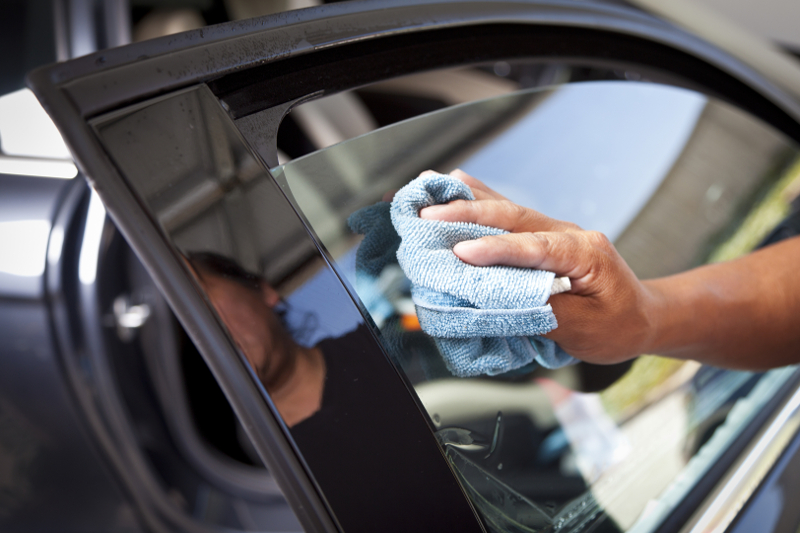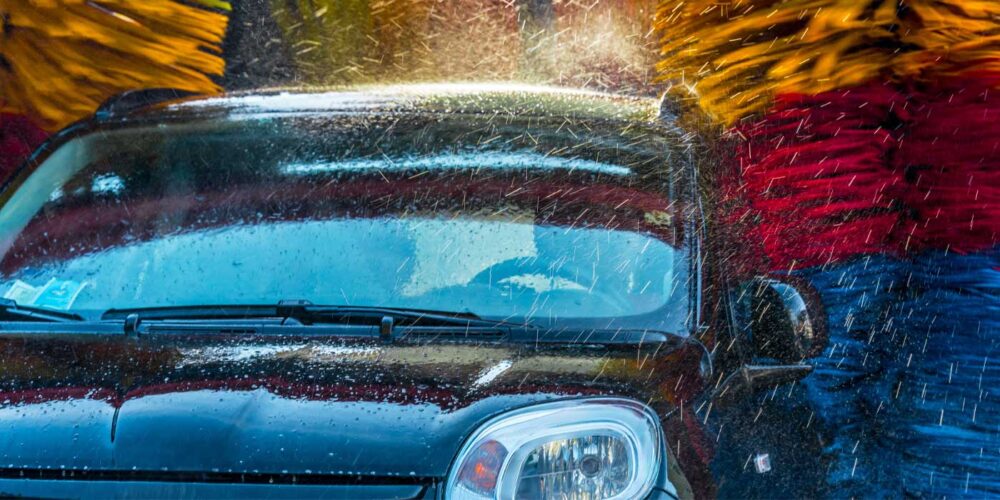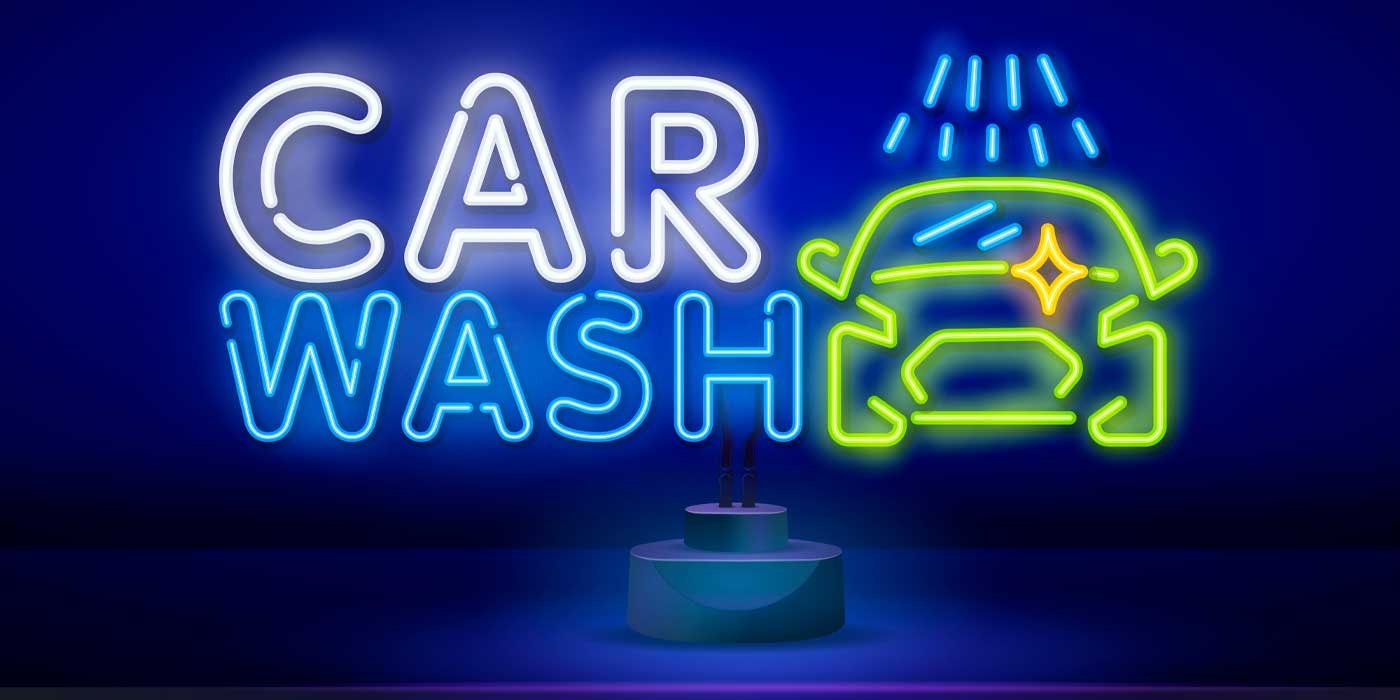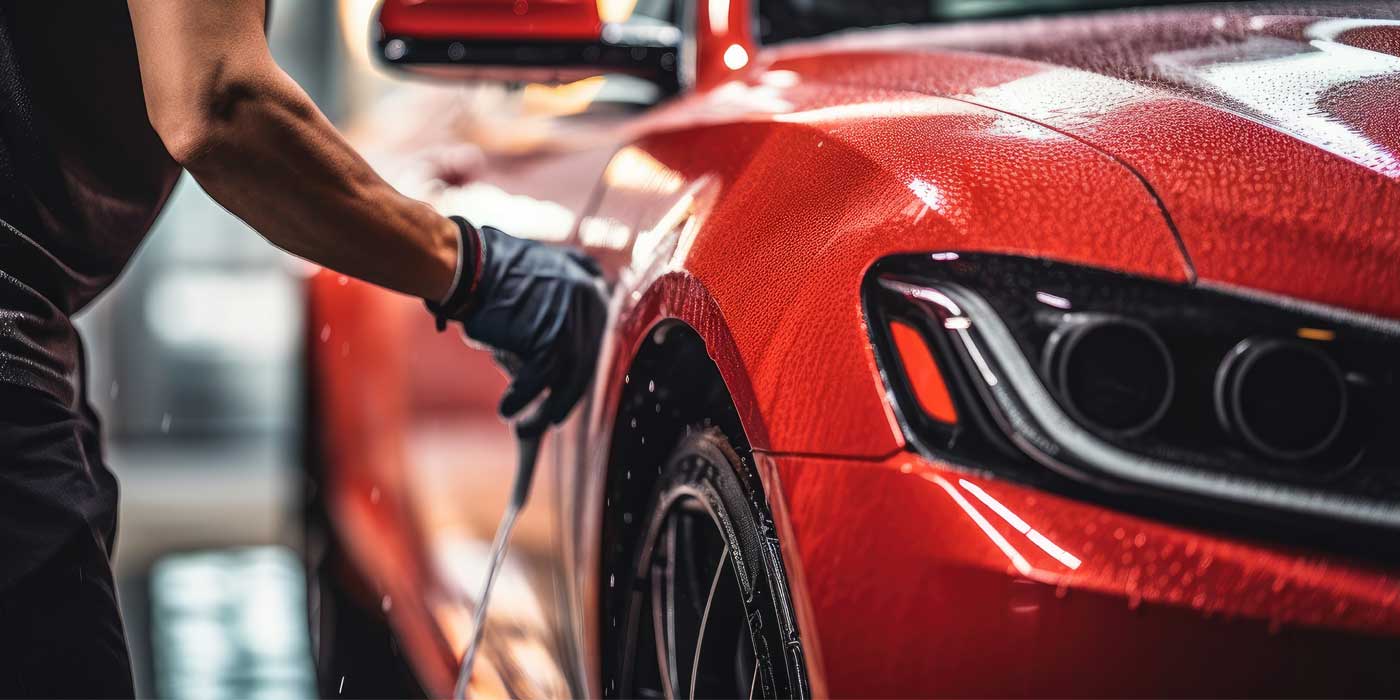If you’ve ever seen what can happen to tint that hasn’t been maintained, then you know it’s not a pretty picture. The bubbled or peeling layer of film on the inside of the windows looks terrible — and sounds worse when the windows are rolled down.
Once tint starts to go, there’s no turning back. The affected area will have to be retinted or removed entirely.
With this being said, it’s important to make sure to wash cars with tinted windows carefully to ensure a job well done and to avoid any bubbling or peeling.
Be prepared
Before washing the windows, make sure the carwash employee who is performing the tasks has the right tools at hand. These include:
- Shade: Washing the car in a shaded spot rather than in direct sunlight makes things dry slower. That means your job is easier, and there is also less chance of water spots.
- Microfiber towels: Don’t use paper or abrasive cotton. Microfiber towels are soft and can absorb a lot of water. Have at least one towel for applying the wash solution and a separate towel for drying.
- Ammonia-free soap: While tint is usually applied on the inside of windows rather than the outside, ammonia-free soap is generally better for all parts of a car.
Save windows for last
It sounds simple, but making sure the glass is clean will do more to help customers feel like their cars are truly clean than anything else will. After all, customers have to look out those windows every time they drive.
With this in mind, first clean the rest of the car before moving on to the windows because the process of washing and rinsing exterior panels can get suds on the glass.
Once it’s time to clean the inside of the windows, choose the cleaner carefully; because the residue from some interior cleaners can turn into a vapor and end up on the tint.
Tint-friendly cleaning
Apply an ammonia-free soap to the inside of the windows with a microfiber cloth. When the entire window is covered, dry it right away unless difficult grime needs a second go-around. Avoid the edges of tint, however, where cleaner can get underneath and cause bubbles.
If there are a few bubbles, you can use a heat gun to try and fix small patches; or try this make-shift trick: Use a credit card wrapped in a soft thin cloth to force air to the edges of windows. Alternatively, if a bubble forms in the center of a window, a small pin may release the air from it, but keep in mind this may cause a small hole to form.
Next is drying the windows. Grab a fresh microfiber cloth, and quarter it to make a smaller surface area for removing the cleaning agent. Move the cloth in the same direction as when the clean was applied. A thin film of cleaner can usually be seen on the window, so use plenty of pressure to make sure it’s all removed. If it dries, you’ll have to start the process again.
Maintenance to ensure longevity
Now that the tinted windows are washed, why not offer customers some friendly tips to help boost the tint’s longevity? Yes, part of this will depend on the window tint; a cheap job could last a couple years, while something nicer could last the lifetime of the car. However, customers can take a few steps to ensure longevity.
Encourage customers to park in the shade or in a garage to decrease the amount of full sun on the windows. Likewise, customers should have the inside of their windows cleaned regularly — for example, whenever they take a trip to your carwash to get an exterior clean; every two weeks is generally a good rule of thumb.
Avoid cutting corners when cleaning tinted windows by keeping these simple suggestions in mind, and you can help ensure the tint — as well as your relationships with customers — lasts a lifetime.
Scott Huntington is a writer and automotive enthusiast from Harrisburg, Pennsylvania. Check out his blog, Off The Throttle, or follow him on Twitter @SMHuntington.
Want to hear more about how to care for window tint as well as updates on market trends? Be sure to check out the below video interview.














